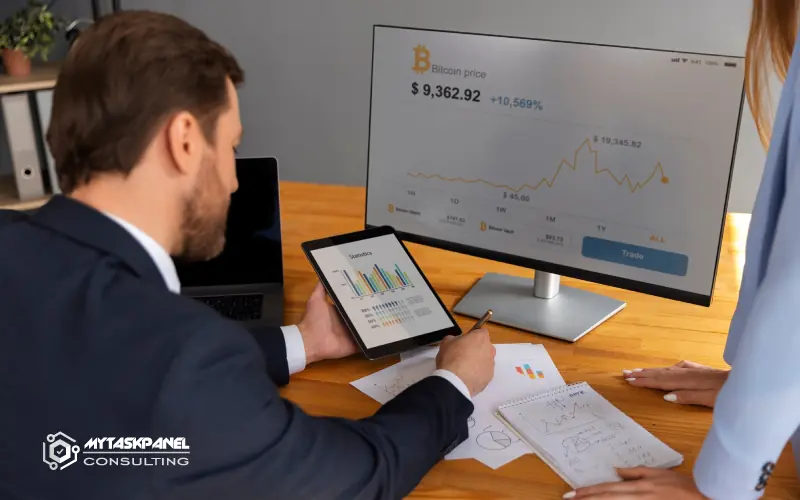Asset tokenization is emerging as one of the most disruptive applications of blockchain technology. This process is changing the way people and companies manage, exchange, and own assets, from real estate to artwork or commodities. In this article, we explain what asset tokenization is, how it works, its advantages and disadvantages, as well as its arrival in Spain and its potential impact on various industries.
What is asset tokenization?
Asset tokenization is the process of converting ownership rights of a physical or digital asset into digital tokens recorded on a blockchain. These tokens represent a portion or the entirety of the underlying asset and can be transferred, exchanged, or sold in a decentralized manner.
For example, a building could be divided into hundreds of digital tokens, with each token representing a proportional share of the property’s value. This enables investors to acquire fractions of assets instead of having to purchase them outright.
Tokenization combines elements of blockchain technology, smart contracts, and traditional legal rights, creating a new form of liquidity and market access.
How does asset tokenization work?
The asset tokenization process involves several key stages that integrate technical, legal, and financial aspects:
1. Identifying the asset
The asset to be tokenized is selected. This can be tangible, such as real estate, or intangible, such as intellectual property or company shares.
2. Creating the token
A digital token is generated on a blockchain, such as Ethereum, Polygon, or Solana. This token is designed to represent the underlying asset and is backed by a smart contract that regulates its properties, such as ownership rights, transferability, or dividend payments.
3. Legal registration
Legal ties are established to ensure the token rights are linked to the underlying asset. This step involves aligning the process with local regulations to guarantee clear and protected rights for investors.
4. Initial token offering (STO or Security Token Offering)
The token is made available to investors through an initial offering. Unlike ICOs (Initial Coin Offerings), STOs are regulated and provide greater legal security.
5. Trading and management
Tokens can be traded on secondary markets, such as decentralized exchanges or specific platforms. Token holders may also receive benefits, such as dividends, rental income, or participation in corporate decisions.
5 advantages of asset tokenization
Accessibility
It allows more people to invest in assets that were previously out of reach. For example, a high-value property can be divided into thousands of tokens, enabling retail investors to participate with small amounts of capital.
Liquidity
Traditional markets are often illiquid. Tokenization enables the buying and selling of assets in digital secondary markets, speeding up transactions and reducing barriers for investors.
Transparency
Since it’s based on blockchain, every transaction is immutably recorded. This increases trust between parties by providing clear and accessible traceability of assets and their transfers.
Cost Reduction
Automation through smart contracts eliminates the need for traditional intermediaries, such as notaries or brokers, reducing transaction-related costs.
Diversification
The ability to buy fractions of assets allows investors to diversify their portfolios more efficiently and with less initial capital.
5 disadvantages and challenges of asset tokenization
Legal framework
Regulations on tokenized assets vary by country and are often ambiguous or non-existent. This hinders global adoption and creates uncertainty for investors.
Technological risks
The security of tokenized assets depends on the underlying blockchain. If the network is compromised, investors could lose their tokens or become victims of fraud.
Complexity
Integrating legal rights with blockchain technology can be challenging, especially in projects involving multiple jurisdictions.
Liquidity in secondary markets
While tokenization theoretically improves liquidity, its reality depends on the availability of reliable secondary markets and trading volumes.
Education and adoption
A lack of knowledge among investors and companies about how tokenization works is a significant obstacle to its mass adoption.
The arrival of asset tokenization in Spain
In Spain, asset tokenization is gaining traction thanks to the growing adoption of blockchain and support from regulations aimed at fostering financial innovation. Key initiatives include:
Pioneering projects
Startups and tech companies in Spain have already launched platforms for asset tokenization, especially in sectors like:
- Real estate: companies like Brickken are exploring solutions to facilitate investment in real estate through tokens.
- Renewable energy: some projects allow investors to participate in solar or wind farms by purchasing tokens.
Growing regulation
The Spanish National Securities Market Commission (CNMV) and the Bank of Spain are working to establish a clear regulatory framework for STOs and digital assets in general. Additionally, the EU’s Digital Markets Act could provide a more stable environment for tokenization in Spain.
Regulatory sandbox
The Spanish government has implemented a regulatory sandbox for fintech projects, allowing companies to test innovative solutions under the supervision of authorities. This is driving experimentation with asset tokenization in a controlled environment.
Institutional interest
Financial institutions and investment funds in Spain have begun exploring the use of tokens to diversify portfolios and offer new products to clients.
Notable use cases
1. Real estate investment
Tokenization enables investors to acquire a fraction of a property in cities like Madrid or Barcelona. This is democratizing real estate investment and expanding participation opportunities.
2. Artwork and collectibles
Tokenization has entered the art world, facilitating the acquisition of shares in valuable pieces without needing to buy the entire work. This is attracting new types of investors and increasing liquidity in the art market.
3. Renewable energy
Energy companies are tokenizing projects, such as solar or wind farms, allowing for sustainable initiatives to be financed and for investors to earn revenue from energy sales.
4. Sports and entertainment
The entertainment industry is exploring tokenization to offer shares in sports events, film royalties, or even team merchandise. Fans can invest and benefit from the success of their idols or teams.
Asset tokenization represents a revolution in how ownership rights are conceived and managed. Despite regulatory and technological challenges, its potential to democratize investments, increase liquidity, and reduce costs makes it one of the most promising trends in the digital economy.
While challenges remain, such as the lack of legal clarity and the need for greater education on the topic, asset tokenization is poised to play a crucial role in the future of global finance. Companies and investors that embrace this technology in its early stages will gain a competitive advantage in an increasingly digital and decentralized market.










